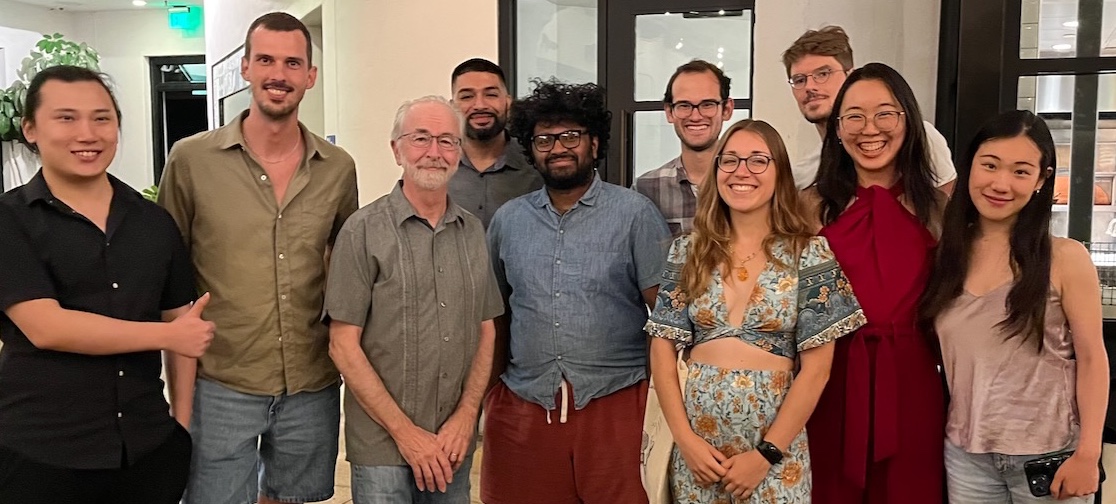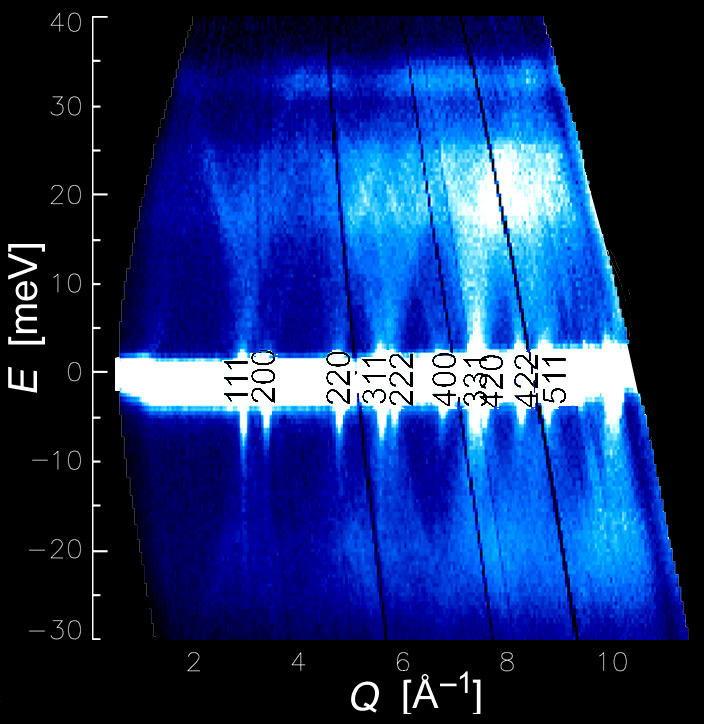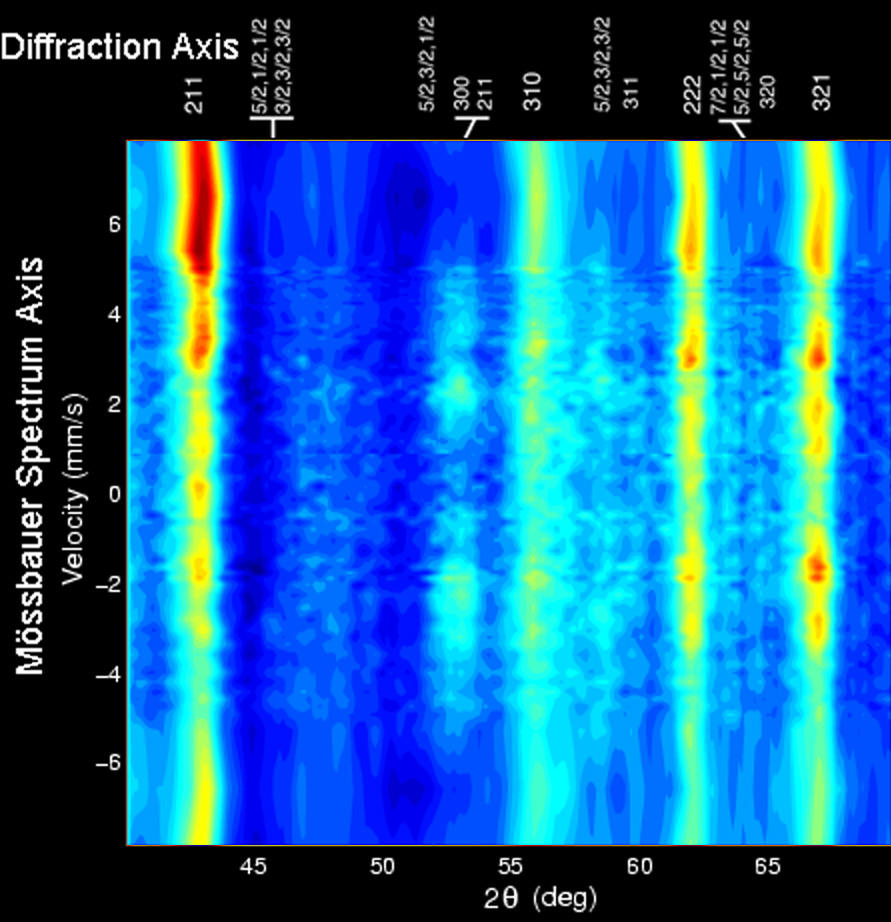

We are graduate students, postdoctoral fellows, and established scientists, located mostly on the second floor of the Keck Laboratory on the Caltech campus. We study materials at the atomic level where quantum mechanics is usually more important than classical mechanics, and where statistical mechanics is more useful than classical thermodynamics. We measure the dynamics of atom motions, using inelastic scattering of X-rays, neutrons, electrons, and gamma-rays. Much of this work requires a substantial computing effort, first to "reduce" the data to a manageable size, and then convert it to physical quantities. An even larger computing effort is then required to simulate the dynamical processes in materials, and how these processes cause inelastic scattering of neutrons or X-rays.
A bit before 1990, we pioneered a new direction of research into the entropy of materials. At the time it was well-known that heat goes into the vibrations of atoms, and this heat is responsible for much of the entropy of a solid. What was not known, however, was if differences in crystal structure, chemical composition, or local arrangements of atoms would alter the vibrational spectrum enough to affect the entropy significantly. We found these differences in vibrational entropy to be generally important for the thermodynamic stabilities of different solid phases. After a few years of disbelief, it is now accepted the details of vibrational entropy make major contributions to the thermodynamic stabilities of materials.
Energy-storage materials offer opportunities for doing both pure science, applied science, and materials engineering. We have been working on materials for hydrogen storage by studying the fundamental mechanisms of how hydrogen molecules are physisorbed on surfaces. Our research on material for Li batteries has included studies of electron hopping in cathode materials (polaron dynamics) and probing the dynamics with temperature and pressure.
Our group regularly performs experiments at national facilities that supply intense X-ray or neutron beams (see Laboratory and Links). Brent Fultz led a project to build a state-of-the-art neutron scattering instrument, ARCS, at the world's most powerful neutron source, the SNS. In the course of this work, we identified new opportunities for scientific computing. ARCS was followed by a national project to build software for more sophisticated neutron scattering science, Distributed Data Analysis for Neutron Scattering Experiments, DANSE.



The three images are from our scattering studies with neutrons, electrons, and gamma-rays, respectively. The electron scattering is primarily Bragg diffraction (with cases of double diffraction here), the neutron scattering shows phonon dispersions that emerge from overexposed but indexed Bragg diffractions, and the gamma-ray scattering shows Bragg diffraction controlled by hyperfine interactions.